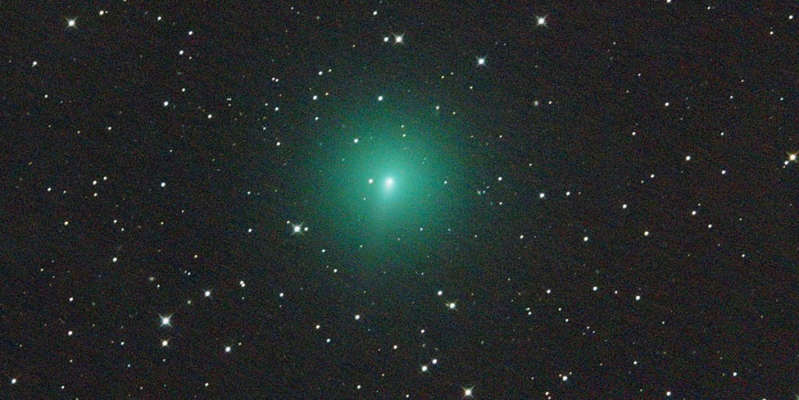
Comet Atlas turned out to be a fragment of an ancient “fireball”
Scientists at the University of Maryland at College Park have established the origin of Atlas, which collapsed on its way to Earth. It may be part of a “mysterious ball of fire” that swept past the Sun five thousand years ago, according to the Astronomical Journal.
In early 2020, Comet Atlas entered the inner solar system. Astronomers believed that it would approach the Earth and could be seen with the naked eye. But long before that moment, the comet collapsed, turning into a cascade of ice fragments.
A new study, based on data from the Hubble Telescopes, showed that it had separated from an ancient giant comet. Another fragment of it is the Great Comet, which was observed on Earth in 1844.
In 3000 BC, the progenitor comet approached the Sun closer than Mercury, at a distance of about 37 million kilometers. According to researchers, her flight was a “spectacular sight” for the civilizations of Eurasia and North Africa during the Stone Age.
Scientists have analyzed the orbits of the Great Comet and the Atlas and concluded that they are following the same path. This indicates their common origin. The connection between the two comets was first noted by amateur astronomer Mike Meyer.
Such “families” of comets are quite common. So, in 1994, comet Shoemaker-Levy was torn apart by the gravitational pull of Jupiter. But the Atlas comet turned out to be very unusual – it disintegrated much farther from the Sun than the progenitor comet (over 160 million km).
“If it collapsed so far from the Sun, how did the parent comet survive the last passage around the Sun 5000 years ago? This is a big question, ”the scientists noted.
One possible explanation is that streams of ejected material could spin the comet, and centrifugal forces tore it apart. Scientists have noted that the Atlas 'twin', the Great Comet, is still traveling through the solar system. But it will approach the Earth only in the 50th century.
Previously, scientists have conducted observations of the largest comet in the solar system. She showed signs of activity.

